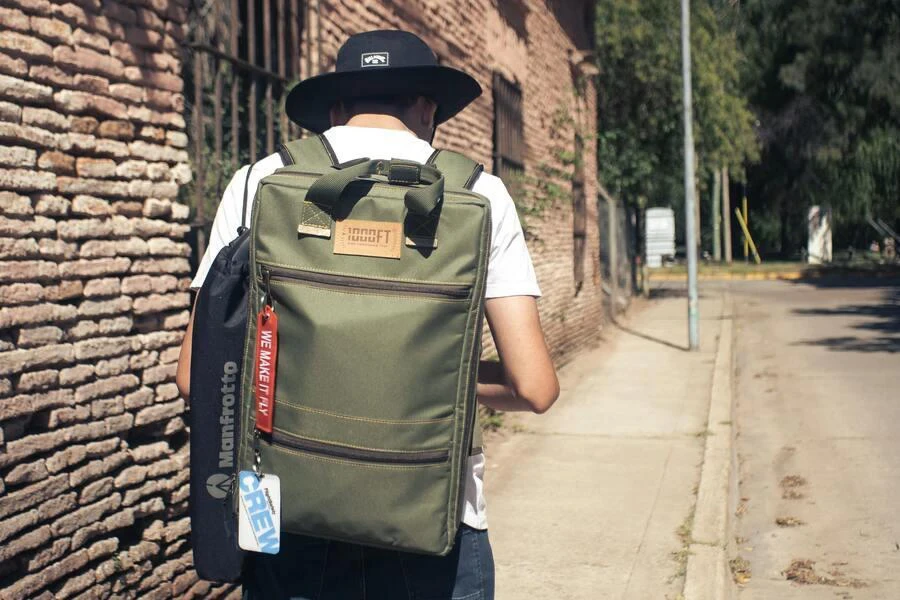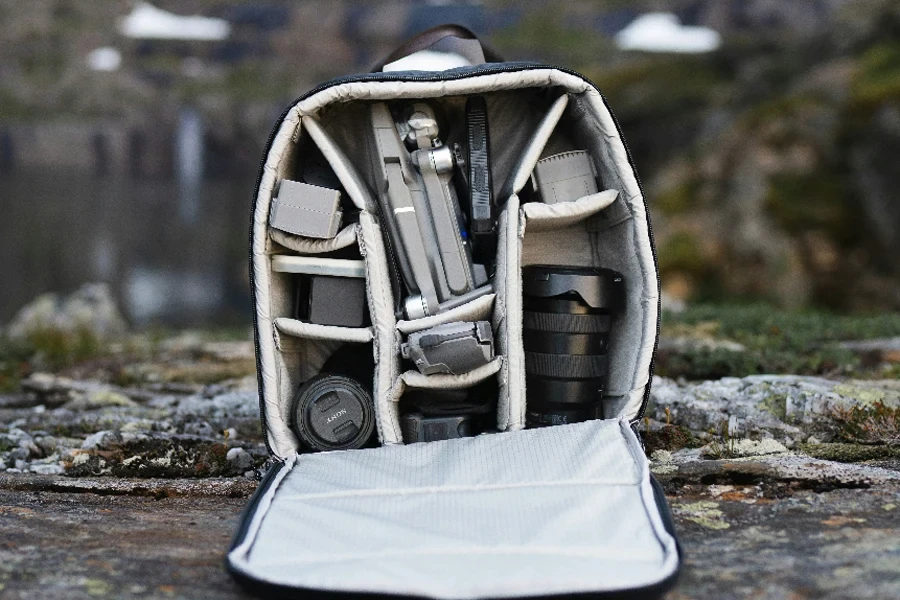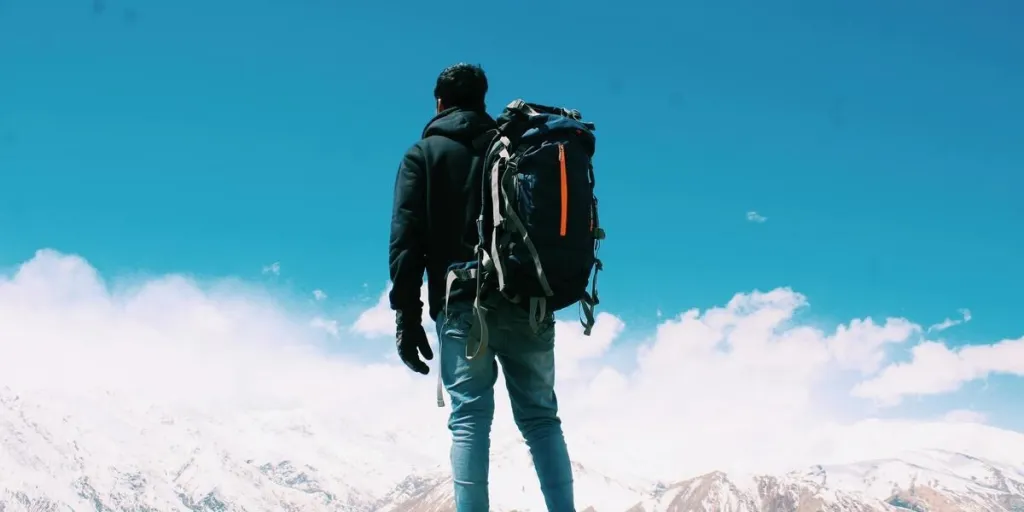Packing daypacks play a key role for casual and serious adventurers in the outdoor gear and accessories market. The Australian backpacks and daypacks eCommerce market is expected to bring in US$ 288.2 million in 2024. This figure will grow at a compound annual growth rate (CAGR) of 5.5% from 2024 to 2028, hitting US $356.6 million. On a global scale, the backpack market is set to generate US$ 20.69 billion in 2024 and reach 25.87 billion by 2028, with a CAGR of 5.7%. These numbers highlight the market’s potential as well as the rising demand for this product.
As more people enjoy outdoor activities, there’s a growing need for versatile, tough, and high-tech daypacks. This demand has sparked new ideas in daypack design. If you’re a leader in the outdoor gear business, knowing what’s new is the best way to stay ahead of competitors and give customers what they want.
This guide looks at the art of daypack packing, specifically focusing on the latest trends in daypack innovation. It offers insights on how companies can use these advancements to boost their products and market plans.
Table of Contents
Latest trends in packing daypack innovations
Final takeaway
Latest trends in daypack innovations

The outdoor gear market has seen multiple daypack design and functionality innovations. These innovations stem from consumer demand for more versatile, durable, and eco-friendly options that cater to various activities, from city travel to nature trips. As the industry evolves, staying informed about these trends is essential for businesses looking to remain competitive and relevant.
1. Smart features and digital integration

The integration of technology into daypacks has been a game-changer. Consumers are increasingly seeking packing daypacks that offer more than just storage; they want products that can carry their essentials and ensure quick access through technology. This has led to the creation of smart daypacks equipped with features like solar panels for charging devices, built-in power banks, GPS tracking capabilities, and Bluetooth connectivity.
For businesses, offering daypacks with these smart features is a great option to attract tech-savvy consumers. Adding smart features like GPS tracking can make it easier for travelers to locate their backpacks and bags. This is especially useful for those carrying important items or traveling to remote destinations. Besides, these innovations provide convenience and add value to the product. Highlighting them in marketing campaigns can showcase the daypacks’ practicality, thereby appealing to modern consumers.
2. Eco-friendly fabrics and manufacturing processes
The global push towards sustainability has influenced many industries, including outdoor gear. A McKinsey report found that 78% of US consumers consider sustainable lifestyles important. In addition, 60% said they would pay more for products with sustainable packaging. These statistics reflect the significance of sustainability among modern-day consumers.
Consequently, there is a growing trend toward using eco-friendly materials and sustainable manufacturing processes in daypack designs. Recycled polyester, organic cotton, and biodegradable fabrics are increasingly popular choices. These materials reduce the environmental impact and appeal to the eco-conscious consumer segment. Incorporating these materials into product lines is a great step in enhancing brand image and aligning with consumer values.
3. Anti-theft and security enhancements

Security features in anti-theft daypacks have also seen significant advancements. RFID-blocking pockets, lockable zippers, hip belt pockets, and hidden compartments are becoming standard in high-quality daypacks. These features provide added security for travelers and urban commuters, protecting their high-use items throughout their trips from theft.
Travelers on business trips can opt for daypacks with secure compartments to ensure that essential items like documents and electronics are safe. This adds a layer of security and convenience, making the daypack a vital accessory.
Businesses can leverage these innovations by emphasizing the added safety and peace of mind that come with their backpacks. This great strategy can appeal to a broader audience concerned about security.
4. Durable and lightweight materials

Modern-day consumers seek daypacks that are eco-friendly, durable, and lightweight. Outdoor adventurers often look for bags that are easy to carry around and capable of surviving in different environments.
Innovative fabric technologies, such as ripstop nylon and Cordura, offer enhanced durability while keeping the overall weight of the daypack minimal. These materials provide excellent resistance to abrasions and tears, ensuring the product’s longevity. Highlighting these features can be a key selling point, especially for consumers interested in taking day hikes, traveling, or daily commuting.
5. Advanced suspension systems

An uncomfortable pack can have significant impacts on a traveler’s shoulder blades. Recent innovations have focused on improving the ergonomic design and suspension systems of daypacks. Some brands use adjustable straps, padded shoulder straps, breathable back panels, and load distribution technologies to ensure even weight distribution. This reduces strain on the wearer’s back and shoulders, especially when carrying the heaviest items.
An example of this innovation is HoverGlide’s floating backpack, which is designed with Suspended Load Technology (SLT) and reduces impact by 86%. SLT helps balance the weight by enabling the carried things to move up and down depending on the adventurer’s walking or running speed. Ultimately, these comfort features are a good idea to differentiate their products in a crowded market, particularly for outdoor enthusiasts who require long-lasting comfort.
6. Expandable and compressible daypacks

Another trend in daypack innovation is the development of expandable and compressible models. These daypacks have compression sacks that can be adjusted in size to accommodate different load volumes. They offer flexibility for users who may need to carry more or less gear depending on the situation. For example, adventurers taking a multi-day hike can expand them to get extra storage space for the heaviest items or compress them to accommodate smaller loads like water bottles, lip balm, or first aid kits.
These features particularly appeal to travelers and adventurers who pack different stuff that varies in size and weight. These customers look for convenience and efficiency, making them a perfect target.
7. Waterproofing
Waterproof daypacks have become increasingly popular, especially among outdoor enthusiasts and travelers who face unpredictable weather conditions. The use of waterproof and water-resistant materials, along with sealed zippers, dry bags, and welded seams, ensures that the contents of the daypack remain dry even in heavy rain or wet environments.
Offering waterproof daypacks can be a major selling point, particularly in destinations where outdoor activities like hiking, kayaking, or camping are popular. Marketing these daypacks as reliable and protective can appeal to consumers who prioritize protecting their belongings from water. Additionally, businesses can highlight the durability and quality of the waterproof materials used, further reinforcing the value of these products.
Final takeaway
The daypack market is evolving rapidly, driven by consumer demand for smarter, more sustainable, and more versatile products. As an investor, you should stay updated on the latest trends in daypack innovation, which is crucial for maintaining a competitive edge. You can do this by offering a variety of daypacks that integrate smart features, eco-friendly materials, security enhancements, durable and lightweight materials, advanced suspension systems, and expandable designs. This can help cater to a diverse customer base and meet the growing expectations of consumers.
Besides, incorporating these innovations into marketing strategies can help your businesses stand out in a crowded market. Emphasizing the unique features and benefits of the daypacks can attract a loyal customer base and boost your brand’s reputation. As the industry grows, embracing these trends is key to long-term success and growth in the outdoor gear market.




